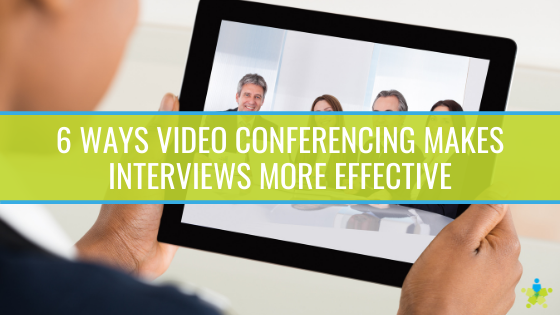[vc_row][vc_column][vc_column_text]
Can video conferencing be used for interviews?
Video conferencing is a standard AV solution for unifying remote teams, facilitating effective meetings and ensuring professionals can remain connected, wherever they are. As such, video conferencing solutions also make sense for interviewing purposes, and in fact, many companies leverage the technology for this purpose. This trend has accelerated since the start of the pandemic, and according to a Gartner survey, more than 80 percent of businesses utilize video conferencing to interview at least some of their candidates. There are several reasons why this is the case, and why video interviewing is likely a long term solution for companies around the globe.[/vc_column_text][vc_column_text]Six Ways Video Conferencing Makes Interviewing Easier and More Effective
A top-notch team helps with the success of a company, so the interview process is of paramount importance for hiring talented team members. Every advantage counts, and here are six advantages that come with video conferencing technology:- Video conferencing reduces scheduling headaches - When interview candidates show up for an onsite interview, there’s a lot of pressure to get them in front of everyone who is part of the process. A single candidate may speak to several people within the company before any judgment can be made on their fit.That can be a logistical nightmare to arrange, and if any obstacles come up, they can put the company in a poor light. It also takes a great deal of time and effort to line up several managers’ schedules, which is time and effort not being spent on other important tasks.Video interviewing removes this common pitfall from the process because it allows everyone involved to interview from their desks. Setting up several dedicated time blocks for onsite interviewing is tough, but even busy executives can find 10 or 15 minutes at their desk to ask a candidate a few questions.
- Video conferencing accelerates hiring - Another problem with onsite interviews is that they are often pushed back or rescheduled due to how difficult it is to get everyone in the same room at the same time. Not only is this frustrating for the candidate and other people involved, it also slows down the process, which also lengthens the time it takes to fill the position.One of the most critical hiring metrics for companies is the time-to-fill, or the amount of time it takes to fill a job opening once it becomes available. The faster your business can get new hires comfortable in their position, the faster your company can fill any gaps in productivity. Video conferencing streamlines interviewing, so your business can review more candidates, spot the best choice faster, and transition them into their new role.
- Video conferencing expands the candidate pool - Modern video conferencing technology is extremely stable and designed for maximum usability. It doesn’t matter what conferencing platform your business chooses as most candidates should have no trouble connecting to your conferencing solution.With location no longer a limiting factor, your company can open up a position to candidates all over the state, country or the entire globe. If the position is a remote one, then it makes sense to do the interviewing remotely so that your organization can find the best candidate, and not just the ones who can be there physically.
- Video conferencing makes it easy for interviewers to keep track of candidates - Some positions may receive thousands of applicants, and hundreds of candidates may be interviewed before the company picks one. That’s a lot of information to keep track of, which is a problem if an interviewer needs to know more about a particular candidate. If there’s no record of previous interviews, then it may be impossible to keep track of which candidate offers what.Video interviewing also solves this problem. All modern conferencing solutions have built-in recording features, so your interviewers can focus on asking important questions and providing important job details to candidates. If a candidate is moved to a second or third round of interviews, then it’s helpful to have previous interactions on record so they can be reviewed. This way, your company’s interviewers know what questions to ask next and what information still needs to be communicated.
- Video conferencing can help organizations find better candidates - If your company does keep track of its interviewing and hiring history, valuable information will emerge. Perhaps a new hire is showing excellent potential right away, or maybe a new hire doesn’t fit in as well as hoped.With video conferencing, your organization can keep a record of how previous interview processes have gone, so it’s easier to pick out common traits among the most successful new hires. This information can be used to guide future interviews so that the best candidates emerge more quickly.
- Video conferencing makes a positive statement about your business - While the pressure is normally on the candidate to make a good impression, it does go both ways. If your organization wants to attract top talent, a pleasant, modern interviewing process can go a long way in selling your business as one to work for.Video conferencing is a must in producing this positive impression, especially among younger professionals. Gen Z and Millennials are accustomed to the speed of video chat, as they have grown up with it. They would rather leverage technology to make the interviewing process as painless and efficient as possible, and with video conferencing, your business can meet them where they are most comfortable.



